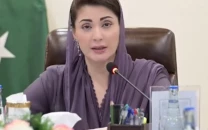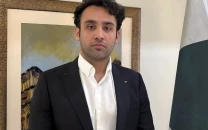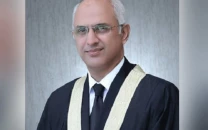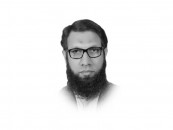Universal primary enrolment: As deadline looms, capital may miss targets
Report paints bleak picture of Islamabad’s ability to achieve target of 100 per cent enrollment by 2015

As the deadline draws closer, it seems that the government might not be able to achieve its universal primary education related millennium development goals (MDG) of attaining 100 per cent enrolment in at least the federal capital schools.
Though the enrolment rate for primary education has steadily increased over the years, the federal capital still lags behind its goal. Education authorities hoped to achieve a 100 per cent gross enrolment rate (GER) for primary education, but with 2015 just round the corner, enrolment has only reached 85.9 per cent, says a report.
The report cites different reasons for the capital’s failure to reach the goal, including poverty, law and order, weak governance and natural disasters that are making it difficult for the government to reach its MDGs.

The Review Report on Education for All (EFA) launched by Ministry of Federal Education and Professional Training recently states, out of the estimated total 21.4 million primary school-going population between the ages of five and nine years, 14.7 million (69%) are enrolled in school, of which 8.2 million (56%) are boys and 6.5 million (44%) are girls.
Although great emphasis was laid on early education, the report reveals that the government and the provincial governments do not allocate sufficient budgets for the cause. The budgets that are allocated for the purpose are inadequate and cannot help the sector to spend on building physical infrastructure and training teaching staff, the report says.
The governments lack a clear policy on the issue. Furthermore, despite the establishment of (early childhood education (ECE) centres and recruitment of ECE teachers in the National Plan of Action for EFA, no concrete steps have been taken so far. It was also revealed that the provinces, districts, communities, and schools lack the capacity to plan, monitor and implement.
The report further states that only 66. 8 per cent of children stay in school till class-V. As a result, there is a large stock of 6.7 million out-of-school children, which for years have posed a major obstacle in achieving EFA targets.
Last year, the government announced the National Plan of Action (NPA) to accelerate progress towards education-related Millennium Development Goals. Under the plan, Pakistan aims to enhance net primary enrolment from 68% in 2011 to 91% by 2015-16. Besides other measures, the government will also provide cash stipends and hopes to enrol an additional 5.06 million children in primary classes at a total additional cost of Rs189 billion over three years.
The report also highlighted that on average, at the national level, 89 per cent of education expenditure is made up of operational costs such as teachers’ salaries while only 11 per cent goes towards development expenditure, which is not sufficient to raise education standards.

Gross enrollment ratio can be above 100 percent if some enrolled students are older or younger than the age group that officially corresponds to that level of education.
The same is the case in the provinces, with an overwhelming share of education expenditure going towards operational costs. For 2012-13, Khyber-Pakhtunkhwa spent 22 per cent of total actual expenditure on development, while no other province reached double figures. Punjab spent five per cent on development, Sindh spent six per cent, and Balochistan spent nine per cent.
STRATEGIES
Besides stressing on the issues, the report lists a number of interventions that can help the government reach its targets.
The EFA report also underscores the necessity for the formulation of rules for the allotment of land. It further stressed on improving the quality of education by training teachers who can help play a positive role. Along with teachers, parents too, it pressed, should be educated about the importance of education.
Published in The Express Tribune, October 11th, 2014.



















COMMENTS
Comments are moderated and generally will be posted if they are on-topic and not abusive.
For more information, please see our Comments FAQ